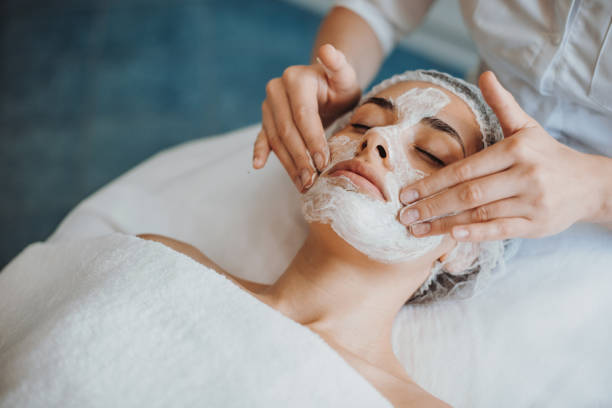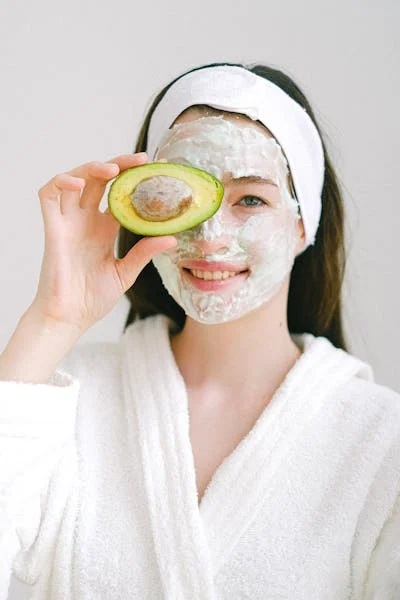This post contains affiliate links, meaning that I may receive compensation if you make a purchase through these links. As an Amazon Associate, I earn from qualifying purchases. This compensation does not influence the content, or recommendations provided. The opinions expressed are my own, and I strive to provide honest and unbiased information.
Maintaining healthy facial skin is essential for a youthful appearance and overall well-being. Regardless of your skin type—whether it’s oily, dry, combination, or sensitive—there are key steps you can follow to keep your skin in peak condition. In this article, we’ll explore these steps.
Trivia: Ancient Egyptians used clay and oils to cleanse their skin. Clay was believed to purify and detoxify the face, similar to how we use clay masks today.
Understand Your Skin Type
One of the most important aspects of skincare is understanding your ‘skin type’. This knowledge helps you choose products and routines that work with, rather than against, your skin. Here’s a quick guide to help you identify your skin type:
– Oily skin: Produces excess sebum, leading to a shiny appearance and larger pores. People with oily skin are prone to acne and blackheads.
– Dry skin: Lacks moisture and often feels tight or flaky. It may appear dull and have fine lines.
– Combination skin: A mix of oily and dry areas, often with an oily T-zone (forehead, nose, and chin) and dry cheeks.
– Sensitive skin: Prone to irritation, redness, or allergic reactions from certain skincare products.
Trivia: Cleopatra, the legendary queen of Egypt, was said to bathe in sour milk. The lactic acid in the milk acted as a natural exfoliant, helping her maintain smooth and youthful skin. Modern skincare products often include lactic acid for its gentle exfoliating properties.
The Basics of Healthy Skin
Regardless of your skin type, maintaining healthy facial skin is possible. These universal steps ensure healthy skin:
1. Cleansing:
Use a gentle cleanser to remove dirt, oil, and impurities. Look for a product suited to your skin type. For oily skin, a foaming cleanser with salicylic acid works well, while dry skin benefits from a cream-based, hydrating cleanser.

2. Moisturizing:
Regardless of skin type, moisturizing is crucial to keeping skin soft and hydrated. Oily skin types should opt for oil-free, non-comedogenic moisturizers that won’t clog pores. Meanwhile, those with dry skin should look for thicker, creamier moisturizers rich in hyaluronic acid or ceramides.
3. Sun Protection:
UV radiation from the sun is one of the leading causes of premature aging and skin cancer. Wearing broad-spectrum sunscreen with at least SPF 30 daily is non-negotiable. Even on cloudy days, up to 80% of UV rays can penetrate the skin, making protection essential year-round.
4. Exfoliation:
Exfoliating your skin once or twice a week removes dead skin cells and promotes cell turnover. For oily and combination skin, a chemical exfoliant containing alpha-hydroxy acids (AHAs) or beta-hydroxy acids (BHAs) can be effective. Those with dry or sensitive skin should use gentler exfoliants, such as lactic acid, to avoid irritation.

5. Hydration:
Hydrated skin is healthy skin. Drinking plenty of water is essential for maintaining your skin’s elasticity and appearance. Water helps flush toxins from the body and keeps your skin cells plump. Using hydrating serums, such as those containing hyaluronic acid, can also help lock in moisture.
6. Balanced Diet:
What you eat has a direct impact on your skin’s appearance. Eating a balanced diet rich in fruits, vegetables, and healthy fats can improve skin elasticity and clarity. Omega-3 fatty acids, found in fish and flaxseed, are known to support skin health by keeping it supple and reducing inflammation.
Targeted Care for Different Skin Types
Now that you have the basics down, let’s look at how you can tailor your skincare routine to address specific concerns for your skin type.
Oily Skin
People with oily skin often struggle with excess shine and breakouts. Look for lightweight, oil-free products that won’t clog your pores. Ingredients like salicylic acid, niacinamide, and retinol can help control oil production and prevent acne. Remember to use a toner to balance your skin’s pH and minimize the appearance of large pores.
Dry Skin
For dry skin, hydration is key. Incorporate products rich in hyaluronic acid, glycerin, and ceramides. Avoid harsh exfoliants and cleansers, as they can strip your skin of its natural moisture. Applying a thicker cream at night can lock in hydration while you sleep.
Combination Skin
If you have combination skin, you may need to use different products on different parts of your face. Apply a lightweight, mattifying moisturizer to oily areas and a richer cream to drier areas. Exfoliation is still essential but stick to gentle exfoliants to avoid over-drying certain areas.
Sensitive Skin
For sensitive skin, it’s important to choose products free from fragrance, alcohol, and harsh chemicals. Choose soothing ingredients like aloe vera, chamomile, and oatmeal, which can calm irritation and reduce redness. Always patch-test new products before applying them to your entire face.
Conclusion
Maintaining healthy facial skin is achievable. By following a consistent routine—cleansing, moisturizing, exfoliating, and protecting—you can maintain radiant, youthful skin. Combine these practices with a healthy diet, regular hydration, and a commitment to ‘sun protection’, and you’ll be well on your way to glowing skin for life.
For information on facial hair removal, review this article.

